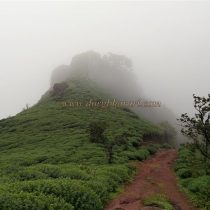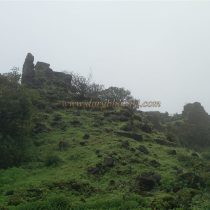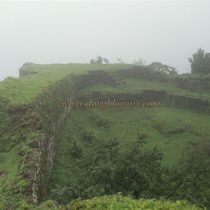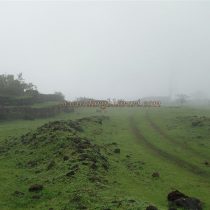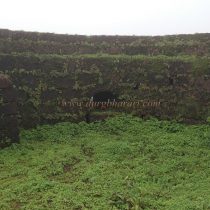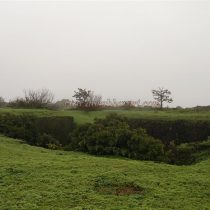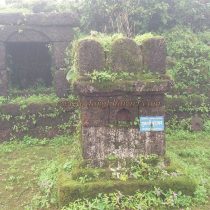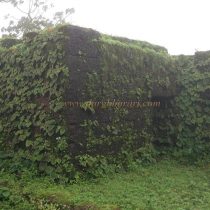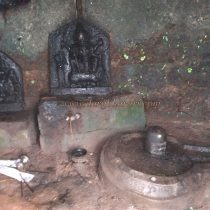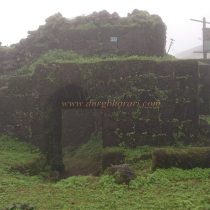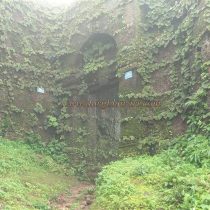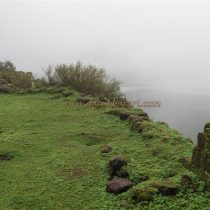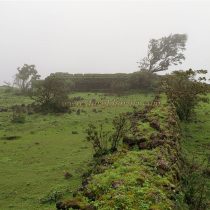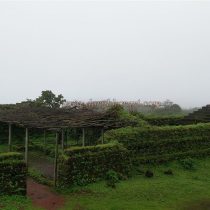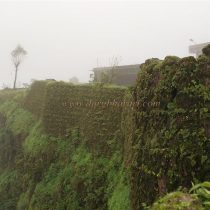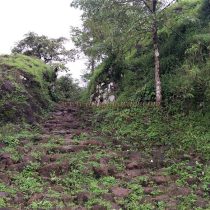KALANIDHIGAD
TYPE : HILL FORT
DISTRICT : KOLHAPUR
HEIGHT : 3300 FEET
GRADE : EASY
Chandgad taluka in the South of Kolhapur district at a distance of 140 km from Kolhapur and 35 km from Belgaon is a hill fort known by various names like Kalanidhigad, Kalanandigad, or Kaalanandigad. Due to its small size and easy climb, the fort is easily accessible still neglected by trekkers. According to the Sabhasad Bakhar, this fort was built by Shivaji Maharaj to keep an eye on the Portuguese in Goa. Moreover, Kalanidhigad is frequently mentioned in the Portuguese archives of Goa. Although it is in Maharashtra, to reach here, one has to come to Kaliwade village via Shinole-Patne via Belgaon. Kaliwade is a village at the base of the fort. The hill on which Kalanidhigad is situated has a unique structure. The fort is fortified and surrounded by good ramparts.
...
From the village of Kaliwade, passing through the fields, we reach a small settlement on the slope on the east side of the fort. As there is no water facility on the fort, take enough water from here. After passing through this settlement, a paved road leads to the fort. When walking on this road, keep in mind the sign of the power transformer and turn right onto the footpath, if you don’t turn right and continue on the path straight, you will reach the top of the fort, but this will consume your 1 extra hour. But if you take this road in the rainy season, you will see a beautiful view of nature. The whole mountain and this road are covered with small green trees of Karvi. Electric wires and poles accompany you as you walk. These poles and wires indicate the road leading to the fort. In the first phase of the mountain, a ravine is formed, which was initially used for surveillance or an outpost. This can be deprived by seeing the remains of some structures present here. After walking for about 15 minutes from here, we climb a few steps and reach the east-facing gate of the fort built between two bastions. Upon entering through this gate, it is seen that the Department of Telecommunications has recently put up a wall and divided the fort into two parts. On the right is the tower of the telecommunications department and on the left are the remains of the fort. There are two broken cannons in front of the door and these cannons have been brought to the fort recently. There are two small stone temples in front of it, one with a Shivling and an idol of Bhairav behind it, while the other with a small but beautiful and well-armed idol of Goddess Bhavani. There is a Hoysala style idol of Ganesha on the temple premises. In front of the temple is a Tulsi Vrindavan (Samadhi). Two such Vrindavans are located in the area where the telecom department's tower is located. After visiting the temples, there is a deep hole in the shape of a rectangle and steps have been built to descend into it. This crater is a huge quarry of stone. For the construction of the fort, stones were extracted from these mines, and later these mines were used as wells. Two wells have been dug for water in this quarry, one of which is filled with bushes and the other is in use. The water in this well is potable but we have to make arrangements to draw water from it. In this well, some quadrangle structures can be seen. After seeing this quarry, we go to the western ramparts of the fort. The forest in front and on the slopes is very dense. On reaching this place, one reaches the end of the fort. Here the forest department has erected an iron tower to keep an eye on the forest. Due to the hill trunk near this bank, there is a plain area under the bank. Since it is easy for the enemy to enter the fort from this side, two large bastions have been built at this place and similarly, large cannons have been provided on it. From this bastion, a large area up to Tilarinagar and Pargad can be seen. The outer part of the bastion at the end has some broken structures. The telecom department has broken down apart from here and made an unpaved road to reach the top. Except for this part, the entire fort is surrounded by good ramparts. Going down this road and looking at the fort, one can see the fortified ramparts of the fort. In the ramparts of the telecommunication tower, you can see a total of four toilets as well as the remains of an old building next to the office of the telecom department. In one place, you can feel the hollowness of the ground and you can also see some constructions. This place should probably have a secret door leading out of the fort in the opposite direction. On the east side of the fort, the river Tamraparni, on the northwest side Gandharvagad and the southwest side Mahipalgad can be seen. This is where your fort round ends. It takes four hours to return to the village after seeing the entire fort. This fort is mentioned in the documents of Karveerkar Chhatrapati while talking about the strength of the fortifications of the fort. Apart from this, the connection of Herekar Sawant Bhosale and Tambulwadikar Sawant with this fort can be read from the documents.
© Suresh Nimbalkar



